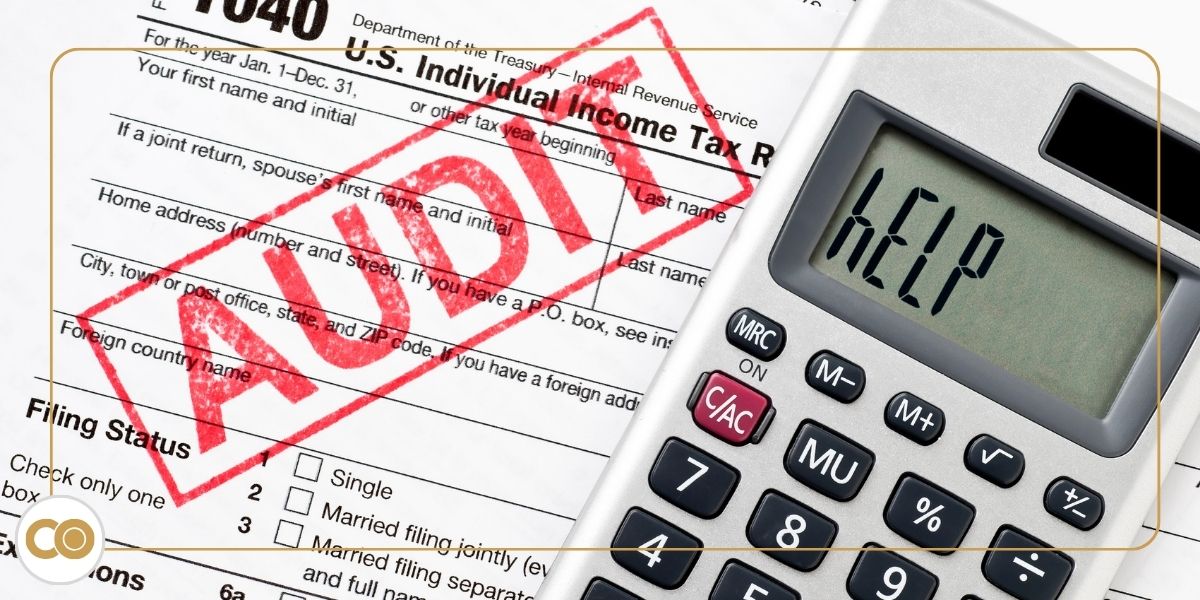How to Prepare for Your Workers’ Comp Audit – 7 Steps to a Stress-Free Audit
February 8th, 2023 | 5 min. read

How many times throughout the year do you think about your annual workers’ comp premium audit?
With everything you already do on a day-to-day basis, it probably isn’t at the forefront of your mind until the audit notice is at the forefront of your desk.
And by then, the date of the audit rapidly approaching, addressing it can be daunting, difficult, and downright defeating.
What would you say if I told you it doesn’t have to be?
Here at Combined, our commercial insurance experts have helped many employers, just like you, use pre-audit practices to produce post-audit results. We want to help you prepare for your annual workers’ comp audit, so that nothing but confidence will be at the forefront of the audit process.
In this article, we will explore the workers’ comp premium audit process and how you can effectively prepare for it.
By reading, you will learn the 7 steps to a stress-free workers’ comp audit.
What is a workers’ comp premium audit?
A workers’ comp premium audit is a year-end review of your total payroll records and coinciding employee classification information.
The workers’ comp premium you pay your insurance carrier is an early estimate of your actual coverage cost for the policy year.
This cost is largely dependent on:
- Your total payroll during the policy year
- Your employee classification rates during the policy year
Because you pay the estimated premium for the ensuing policy year, these contributing factors have to be verified at the year’s end.
So, the workers’ comp audit simply checks to make sure that the predicted premium you paid reflects your actual payroll expenses and correct employee classification rates.
What happens during a workers’ comp audit?
During your workers’ comp audit, a third-party auditor will require you to provide your payroll and employee classification records.
Their job is to evaluate your records and determine whether the premium you paid for your coverage was correct, too high, or too low.
If the premium you paid was:
- Correct - no further action will be taken
- Too high - your insurance carrier will refund you the difference in cost
- Too low - your insurance carrier will charge you for the difference in cost
The workers’ comp audit will be conducted in one of three ways:
- Mail audit
You will receive a workers’ comp audit form from your auditor via the mail. Your only responsibility is to fill out the form accurately and completely, including any documentation requested, and return it to them in a timely manner. - Phone audit – You will be required to submit a workers’ comp audit form with all necessary documentation. Following submission, an auditor from your insurance carrier will call you to go over your records and answer questions to verify that your submission was correct.
- On-site audit – An auditor will schedule a visit to your workplace and conduct the audit on the premises. You will be expected to have your records ready, provide them a space to review your documentation, and answer any questions they may have.
How to prepare for your workers’ comp audit
Whether your audit is through the mail, over the phone, or with an on-site visit, a smooth audit process has one common component.
Preparation.
Alexander Graham Bell said it best – “Before anything else, preparation is the key to success.” Even he probably didn’t know how true these words would be to the workers’ comp audit process.
7 steps to a stress-free workers’ comp audit
These 7 simple preparation practices can make your workers’ comp audit a quick, easy, and stress-free experience.
1. Be ready to respond – and respond promptly
When you receive your audit notice, respond immediately.
No matter the method of your audit, prioritize quickly gathering the requested documentation and returning it to your auditor.
Your auditor is on a busy schedule – so, the quicker you return the information they request, the more expedient your audit will be.
2. Assign a primary point-of-contact representative to manage your audit
Make sure that you have one person in charge of managing the audit process.
This person should be well-versed in all facets of company operations. From different department functions to employee job descriptions, your audit leader should not only be knowledgeable, but also ready to answer any questions that may arise during the audit process.
Here are a few ways your primary point-of-contact representative can prepare for the audit:
- Know the ins and outs of the payroll expenses for your policy year
- Understand the employee classification rates for your policy year
- Review the auditor’s worksheets from the previous policy year
By delegating this responsibility to a single person who is familiar with both your business and the audit process, you make sure all necessary information is accurately and efficiently relayed to your auditor.
3. Organize your payroll records
When your auditor requests payroll records, they won’t play “Where’s Waldo” trying to find the information they need. If your documentation is not clear and organized, you may wind up paying a higher premium simply because your auditor could not easily locate relevant records.
With this in mind, only provide your auditor with the documentation they request. In this case, more is not merrier – additional information is additional work for your auditor and can lengthen the audit process.
The principal payroll items to have ready and organized are:
- Payroll journal or ledger reflecting employee classification rates
- Timekeeping information separated by regular and overtime hours
- Tax forms including W-2, 1099, 941, and policy year federal tax returns
- And any other payroll documentation specifically requested by your auditor
With these records organized and ready to go, your auditor’s job will be simple and your workers’ comp audit will reflect correct rates, accurate hours, and a precise premium.
4. Update your employee classification information
Because employee classification rates are determined by workplace risk exposure, you need to make sure that your job descriptions are detailed and updated.
If they are, your auditor will have no problem assigning the right rate to each applicable payroll group.
5. Account for any payroll separation in your documentation
Your total payroll needs to be properly grouped by employee classification rate.
In the case of a single employee performing multiple jobs, their hours may be split under different classification rates. This means that for employees with several job requirements, a portion of their payroll may be allotted a lower rate than the rest.
What happens if you fail to account for this payroll separation? Their payroll does not get separated.
Instead, without this payroll separation documented, your auditor will classify their entire payroll under the most expensive classification rate.
By having your total payroll broken down into the correct employee classification rates, you prevent overpaying for wrong classifications.
6. Have Certificates of Insurance (COI) for all subcontractors and independent contractors on hand
If you employ subcontractors or independent contractors, you are not responsible to carry workers’ comp insurance coverage for them. Rather, they are required to carry their own policy.
However, during your workers’ comp audit, your auditor will review your subcontractors and independent contractors to make sure they carry coverage. If you don’t have COIs to prove that they carry their own workers’ comp insurance, you will be charged for their risk exposure.
Having this documentation accessible will spare you from unnecessary premium expenses.
7. Expect to carefully review audit worksheets before signing
Finally, plan on requesting and reviewing your audit worksheets before accepting your policy premium.
Never sign off on incomplete audit worksheets. Your auditor is only human and, needless to say, mistakes happen.
Taking the time to go over your finished audit worksheets is an easy yet effective way to ensure that all t’s are crossed, i’s are dotted, and your audit is correctly completed.
And, in the spirit of preparation, having a record of your audit worksheets can help equip you to take on the workers’ comp audit for your next policy year.
Next steps to prepare for a stress-free workers’ comp audit
As an employer, most of the time your annual workers’ comp premium audit is out of sight.
Which makes it overwhelming to prepare for when it’s right around the corner.
By reading this article, you learned 7 steps to efficiently prepare for your workers’ comp audit and make it a stress-free experience.
At Combined, our team of commercial insurance experts is ready to assist you with your workers’ comp audit. Having supported employers for years with the year-end audit process, we are confident that we can help you effectively prepare for a successful premium audit.

|
Schedule a meeting with an expert and be ready for your workers’ comp audit. |
 |
If you are not yet ready to speak with a team member, you may find these resources helpful: |
This article is not intended to be exhaustive nor should any discussion or opinions be construed as legal advice. Readers should contact legal counsel for legal advice.
